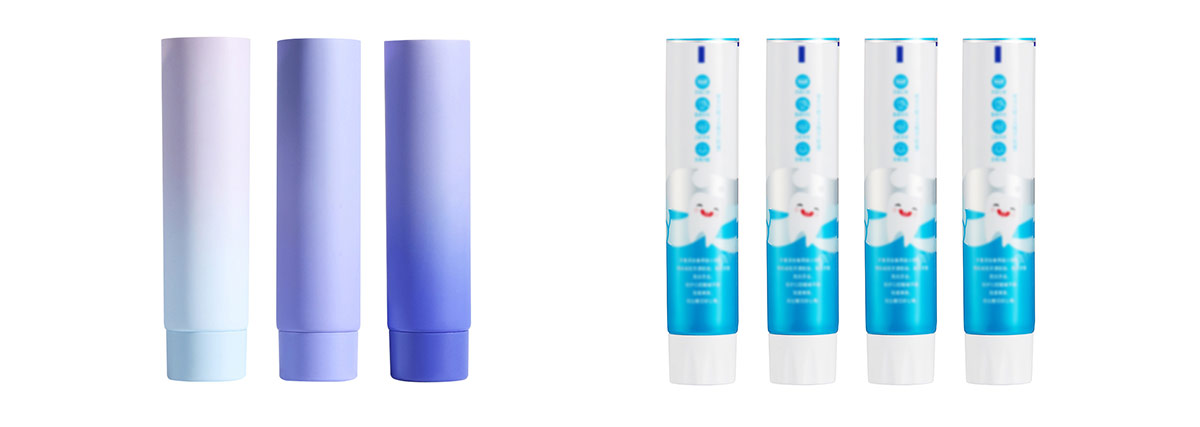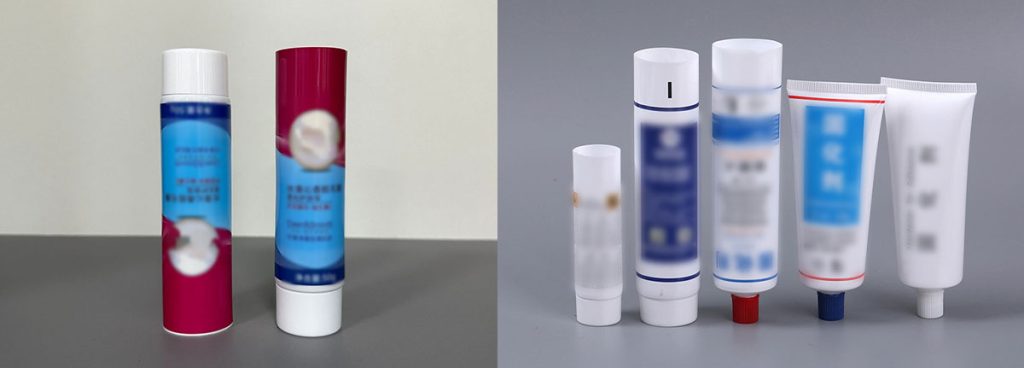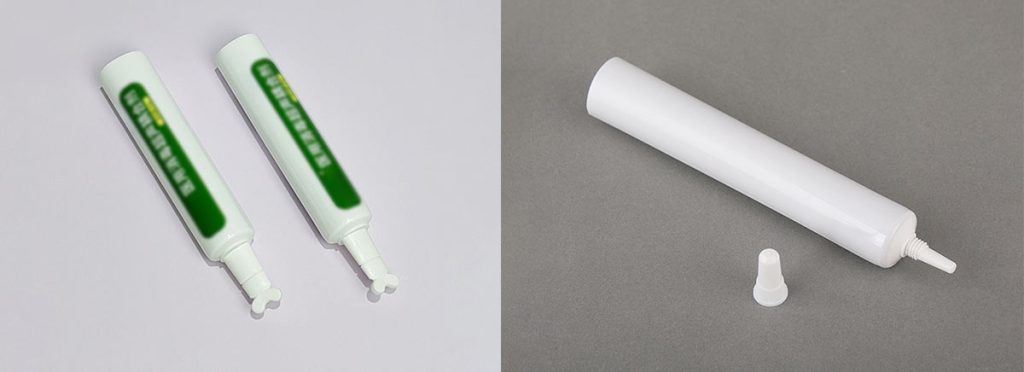

Global demand for laminate tube packaging continues to surge as brands seek innovative ways to deliver value. Companies now prioritize strong partnerships with lami tube manufacturers who can adapt to rapid market shifts. The market stands at USD 9.74 billion in 2024 and is projected to reach USD 15.16 billion by 2032, with a compound annual growth rate of 5.74%.
- Many organizations invest in advanced machinery and adopt eco-friendly packaging solutions to meet evolving consumer expectations.
- Effective strategies help partners leverage technology and sustainability for mutual growth.
Key Takeaways
- Select lami tube manufacturers based on key criteria like printing quality, laminate type, and security features. This ensures a reliable partnership that meets your product needs.
- Implement a thorough vetting process to avoid costly mistakes. Look for warning signs such as missed deadlines and poor communication to ensure a strong collaboration.
- Set clear partnership goals that align with market trends. Focus on sustainability, logistics efficiency, and consumer demand to drive mutual growth.
- Regularly review key performance indicators (KPIs) to track progress and adapt to changes. This keeps both partners focused on shared objectives and enhances collaboration.
- Establish well-structured contracts that include essential elements like quality standards and termination clauses. This protects both parties and fosters a successful partnership.
Finding Lami Tube Manufacturers
Selection Criteria
Selecting the right lami tube manufacturers requires a structured approach. Companies must evaluate several critical factors to ensure a reliable partnership. Industry experts recommend focusing on the following criteria:
- Printing and Graphics: High-resolution graphics play a vital role in product appeal. Lami tube manufacturers with advanced printing capabilities can deliver vibrant, detailed designs that enhance shelf presence.
- Type of Laminate: The choice between Aluminium Barrier Laminate (ABL) and Plastic Barrier Laminate(PBL) depends on the product’s sensitivity and intended use. ABL suits pharmaceuticals and food, while PBL works well for cosmetics and personal care.
- Type of Caps and Its Color: Cap design and color influence both usability and brand image. Manufacturers should offer a range of options to match branding needs.
- Tube Diameter: The diameter affects product volume and cost. Lami tube manufacturers must provide flexibility in sizing to accommodate different market segments.
- Tamper Evident Seals and Security Features: Security features protect product integrity and build consumer trust.
Tip: Companies should also consider the manufacturer’s experience with eco-friendly materials and their ability to meet sustainability goals. Market trends show a growing preference for packaging that offers durability, barrier protection, and environmental responsibility. Manufacturers who invest in innovative, sustainable solutions align better with evolving consumer and regulatory expectations.
Vetting Process
A thorough vetting process helps organizations avoid costly mistakes and ensures a strong foundation for collaboration. Companies should look for warning signs that may indicate potential issues:
- Missed delivery deadlines
- Product defects or recurring quality failures
- Non-compliance with industry standards
- Poor communication and lack of responsiveness
- Overemphasis on the lowest quote at the expense of quality
- Overlooking necessary certifications
- Ignoring cultural fit between organizations
- Failing to verify technical and production capabilities
To conduct a comprehensive evaluation, organizations should:
- Assess the technical capabilities of lami tube manufacturers, including their expertise with laminated tube production.
- Evaluate financial stability to confirm the manufacturer can meet long-term commitments.
- Check for certifications and compliance with relevant industry standards.
- Determine production capacity to ensure the manufacturer can handle current and future demand.
- Review past performance by examining case studies and seeking client references.
The research process involves collecting data from various sources, analyzing market share, and validating findings with industry experts. Data mining and triangulation help identify reputable lami tube manufacturers who can deliver consistent results.
Technology Assessment
Technology plays a decisive role in the selection process. The adoption of lami tube making machine directly influences manufacturer capabilities and product quality. Companies should assess the manufacturer’s investment in modern equipment and automation. The following table highlights key advantages of laminated tube making machine:
| Feature/Advantage | Description |
|---|---|
| Improved Production Efficiency | Streamlined processes increase manufacturing speed and reduce downtime. |
| High Volume Production | Machines can produce large quantities of laminated tubes quickly, supporting scalability. |
| Precision Control | Advanced systems ensure consistent tube quality and precise dimensions. |
| Automation | Automated feeding and sealing reduce human error and boost productivity. |
| Superior Protection | Multi-layer construction preserves product integrity and prevents spoilage. |
| Enhanced Visual Appeal | High-quality graphics and vibrant colors improve product presentation. |
| Long-term Cost Savings | Efficiency and reduced waste lead to greater profitability over time. |
| Potential for Innovation | Ongoing technological advancements enable new packaging solutions and features. |
Lami tube manufacturers who leverage state-of-the-art lami tube making machines can offer superior laminated tube products with enhanced durability, visual appeal, and cost efficiency. These technological investments also support the development of eco-friendly packaging, meeting the rising demand for sustainable solutions.
Setting Partnership Goals
Defining Objectives
Companies entering the market of laminate tube packaging must set clear and measurable objectives for their partnerships. These objectives guide both parties and ensure that every collaboration delivers value. Most organizations focus on several key goals when forming strategic partnerships with lami tube manufacturers:
- Meeting the rising consumer demand for advanced packaging materials that offer both visual appeal and functional benefits. Laminated tubes now stand out as the preferred choice over traditional packaging.
- Supporting eco-friendly initiatives by developing recyclable and biodegradable laminate tubes. Many manufacturers now prioritize PBL types that enable mono-material recycling.
- Improving logistics efficiency. Laminated tubes provide robust protection and flexibility, which reduces the risk of leakage or damage during shipping, especially for online retail and direct-to-consumer channels.
- Addressing the growing demand for clean-label products. Laminated tubes help maintain product integrity and prevent contamination.
- Advancing the circular economy. Manufacturers invest in closed-loop systems, recycled-content laminates, and mono-material tubes to align with recycling objectives in North America.
Tip: Companies should revisit their objectives regularly to ensure alignment with evolving trends in the laminate tube packaging market. This proactive approach helps maintain relevance and competitiveness.
Aligning Expectations
Alignment between partners forms the foundation of successful collaborations in the laminate tube packaging market. Both parties must communicate their expectations clearly and document all agreements. Companies can use several approaches to keep their goals in sync with market needs:
- Focus on technological advancements, such as improved sealing and printing methods, to meet changing consumer preferences.
- Prioritize sustainability by developing recyclable and eco-friendly laminate materials.
- Embrace market-driven innovations. Brands now choose laminate tubes for their premium look and customizable finishes.
- Adopt lean manufacturing and automated processes to boost efficiency and reduce lead times.
- Invest in AI-powered quality control and IoT-enabled monitoring to ensure consistent product quality.
- Use high-speed manufacturing lines and digital printing technologies to increase production agility.
- Leverage real-time production analytics and supply chain visibility to optimize material use and minimize waste.
Note: Open communication and transparency help prevent misunderstandings. Companies should establish regular check-ins and performance reviews to keep expectations aligned.
KPIs
Key performance indicators (KPIs) provide a framework for measuring the success of partnerships in the laminate tube packaging market. Well-defined KPIs help both parties track progress and address issues early. Common pitfalls in setting partnership goals include unclear roles, poor communication, and neglecting legal or financial protocols. Companies can avoid these challenges by:
- Defining roles and responsibilities clearly. Both sides should agree on revenue sharing and monitor fairness to prevent imbalances.
- Establishing communication protocols. Transparency and thorough documentation support smooth operations.
- Consulting legal and financial professionals. Contracts should include exit strategies and address intellectual property concerns.
- Developing a dispute resolution plan. Proactive conflict management keeps the partnership focused on solutions.
- Diversifying revenue streams and building internal capacity. This approach reduces overdependence on a single partner and ensures business continuity.
A sample KPI table for strategic partnerships in the laminate tube packaging market:
| KPI Category | Example Metrics |
|---|---|
| Product Quality | Defect rate, consistency, compliance with specs |
| Sustainability | Percentage of recyclable materials, waste reduction |
| Delivery Performance | On-time delivery rate, lead time |
| Innovation | Number of new product launches, adoption of new technologies |
| Cost Efficiency | Cost per unit, reduction in production waste |
Callout: Regularly reviewing KPIs ensures that both partners stay focused on shared goals and adapt to changes in the laminate tube packaging market.
Negotiating Agreements
Contract Essentials

Successful partnerships with lami tube manufacturers depend on well-structured contracts. Each agreement should include several critical elements to protect both parties and ensure mutual benefit:
- Non-disclosure Agreements (NDA): Safeguard sensitive business information.
- Licensing Agreements: Grant legal rights for manufacturing specific products.
- Purchase Orders (POs): Define transaction terms and expectations.
- Quality Standards: Set benchmarks for product quality and consistency.
- Supply Chain Agreements (SCA): Enhance efficiency and streamline communication.
- Essential Processes: Clarify operational procedures and responsibilities.
- Termination Clauses: Specify conditions for ending the partnership.
Contracts that address these essentials help companies avoid misunderstandings and establish a foundation for long-term collaboration.
Pricing Terms
Pricing negotiations require transparency and a clear understanding of market dynamics. Companies should evaluate cost structures, payment schedules, and volume discounts. They often request detailed breakdowns of material, labor, and logistics costs. Manufacturers may offer flexible pricing models, such as tiered rates for larger orders or incentives for long-term commitments. Both parties benefit from documenting all pricing terms to prevent disputes and ensure fair compensation.
Tip: Regularly review pricing agreements to reflect changes in raw material costs, technology upgrades, or shifts in demand.
Risk Management
Risk management strategies play a vital role in maintaining supply chain resilience. Companies use several approaches to minimize disruptions and protect their interests. The following table summarizes effective strategies:
| Strategy | Description |
|---|---|
| Increase capacity | Use decentralized capacity for predictable demand and centralized capacity for unpredictable demand. |
| Transition to redundant suppliers | Employ multiple suppliers for high-volume parts and centralize redundancy for low-volume products. |
| Increase responsiveness | Focus on cost for commodity products and responsiveness for short life cycle products. |
| Increase inventory | Decentralize inventory for predictable, lower-valued parts and centralize for high-valued parts. |
| Increase flexibility | Prioritize cost for predictable, high-volume parts and flexibility for low-volume parts. |
| Aggregate demand | Aggregate demand as unpredictability increases. |
| Increase capabilities | Prefer capability for high-value parts and cost for low-volume commodities. |
- Secure the supply chain by conducting thorough due diligence on suppliers.
- Maintain open communication to address potential risks quickly.
- Implement contingency plans and diversify the supplier base to reduce vulnerability.
Establishing clear communication channels and shared goals fosters trust among partners. Coordinating risk management processes and sharing information enables proactive detection and evaluation of risks. This approach strengthens the overall supply chain and supports business continuity.
Quality and Compliance
Assurance Protocols
Lami tube manufacturers implement strict assurance protocols to maintain product quality and address environmental concerns. They purchase raw materials from reliable vendors and secure customer approval on specifications before production begins. Internal meetings outline project requirements, and each manufacturing step receives a sign-off. A final inspection occurs before packaging and shipping. These steps help manufacturers meet high standards and respond to environmental concerns in the packaging industry.
Quality assurance protocols include several key practices:
- Purchase raw materials from proven vendors.
- Obtain customer approval for prints and specifications.
- Conduct internal launch meetings to communicate requirements.
- Sign off at each manufacturing step, including final inspection.
- Perform a final inspection before packaging and shipping.
| Quality Assurance Protocols | Description |
|---|---|
| Quality Control Checks | Conduct quality control checks throughout the manufacturing process to ensure compliance with standards. |
| Inspections | Perform inspections at various stages to verify product quality. |
| Adherence to Specifications | Ensure all products meet specified dimensions, tolerances, and other requirements. |
Manufacturers who follow these protocols reduce risks and support environmental concerns by minimizing waste and ensuring consistent product quality.
Regulatory Standards
Manufacturers must comply with regulatory standards in major markets. These standards address safety, chemical composition, and environmental concerns. The following table summarizes key regulations:
| Regulatory Standard | Description |
|---|---|
| FDA (US) | Ensures materials are compliant with FDA regulations for indirect food contact (21 CFR). |
| EU Cosmetics Regulation (EC) No 1223/2009 | Governs all cosmetic products in the EU, including packaging safety. |
| REACH (EU) | Regulation concerning the Registration, Evaluation, Authorisation and Restriction of Chemicals. |
| Migration Limits | Specific limits on substances that can migrate from the packaging into the cosmetic product must be met. Reputable suppliers provide documentation proving compliance with relevant standards. |
Manufacturers who meet these standards demonstrate a commitment to safety and respond to environmental concerns in global markets.
Audits
Regular audits help manufacturers maintain compliance and address environmental concerns. Auditors review documentation, inspect production facilities, and verify adherence to protocols. They check for compliance with regulatory standards and evaluate the effectiveness of assurance protocols. Audits also identify areas for improvement and support continuous enhancement of quality systems. Manufacturers who welcome audits show dedication to transparency and environmental concerns, building trust with partners and customers.
Collaboration and Innovation
Joint Projects
Successful partnerships in the global market of laminate tube packaging often begin with joint projects. Companies and lami tube manufacturers collaborate to develop new products, improve existing designs, and address market needs. Many teams focus on eco-friendly packaging solutions, using sustainable innovations to reduce environmental impact. They select recyclable materials and optimize the use of lami tube making machines to create laminated tubes that meet strict quality standards. Joint projects encourage knowledge sharing and foster creativity. Partners often pilot new technologies together, such as automated filling systems and smart monitoring tools, to enhance efficiency and product appeal.
Continuous Improvement
Continuous improvement drives growth in the global laminate tube packaging industry. Manufacturers and brands regularly review processes and adopt technological innovations to stay competitive. They use real-time data analytics to monitor production and identify areas for optimization. Teams implement Industry 4.0 technologies, including IoT-enabled monitoring and AI-driven predictive maintenance, to boost quality control. Robotic automation in the filling process increases operational uptime and reduces errors. Companies also focus on reducing material waste through smart manufacturing practices, which can lower costs and support sustainability goals. These innovations help partners respond quickly to changing market demands and maintain high standards for laminated tubes.
| Innovation Type | Description | Impact on Manufacturing |
|---|---|---|
| Industry 4.0 Technologies | IoT-enabled monitoring and AI-driven predictive maintenance | Enhances efficiency and quality control |
| Robotic Automation | Robotics in the filling process | Increases operational uptime by up to 20% |
| Eco-friendly Materials | Sustainable laminated materials for recyclability | Supports growing demand for eco-friendly options |
| Real-time Data Analytics | Smart solutions for process optimization | Enables rapid adaptation to production demands |
| Reduction in Material Waste | Smart manufacturing practices | Reduces material waste by 15%, boosting ROI |
Conflict Resolution
Effective conflict resolution strengthens partnerships in the global laminate tube packaging sector. Teams use several strategies to address disputes and maintain collaboration:
- Establish regular communication channels and protocols to prevent misunderstandings.
- Utilize interest-based negotiation and joint problem-solving to find mutually beneficial solutions.
- Foster transparency, consistency, and reliability to build trust.
- Implement mediation and arbitration as formal mechanisms for dispute resolution.
These approaches help partners overcome challenges and maintain focus on shared goals, especially when developing innovations or adopting new technologies.
Conclusion

Successful partnerships with lami tube manufacturers rely on clear strategies and a commitment to innovation. Companies discover new opportunities by adopting advanced technology and eco-friendly packaging solutions.
- They benefit from biodegradable materials, lightweight tube designs, mono-material recycling, and refillable systems.
- These opportunities support market growth analysis and address rising demand in pharmaceuticals, especially with pharmaceutical industry adoption increasing globally.
Companies that embrace sustainability and adaptability position themselves to capture more opportunities in the evolving laminate tube packaging market.
FAQ
What Are the Main Benefits of Laminate Tube Packaging?
Laminate tube packaging offers strong barrier protection, attractive graphics, and flexible sizing. Brands choose this solution for its durability and ability to maintain product freshness. Many manufacturers now use eco-friendly materials to address environmental concerns and meet consumer demand for sustainable packaging.
How Do Lami Tube Manufacturers Address Environmental Concerns?
Manufacturers invest in recyclable and biodegradable packaging materials. They optimize production processes to reduce waste and energy use. Many companies also implement closed-loop systems and use mono-material tubes. These efforts help brands meet environmental regulations and consumer expectations for responsible packaging.
What Should Companies Consider When Exploring Market Opportunities In Laminate Tube Packaging?
Companies should analyze consumer trends, regulatory requirements, and supplier capabilities. They must evaluate the environmental impact of packaging choices. Advanced technology and sustainable practices create new market opportunities for brands seeking to differentiate their products and respond to evolving packaging demands.
How Do Advanced Lami Tube Making Machines Improve Packaging Quality?
Modern lami tube making machines deliver precise dimensions, high-quality graphics, and consistent sealing. Automation reduces errors and increases production speed. These machines support the creation of innovative packaging designs and help manufacturers meet strict quality and environmental standards.
Why Is Collaboration Important in the Packaging Industry?
Collaboration enables brands and manufacturers to share expertise, develop new packaging solutions, and respond quickly to market changes. Joint projects often focus on sustainability and innovation. Working together helps companies address environmental challenges and capture emerging market opportunities in the packaging sector.
